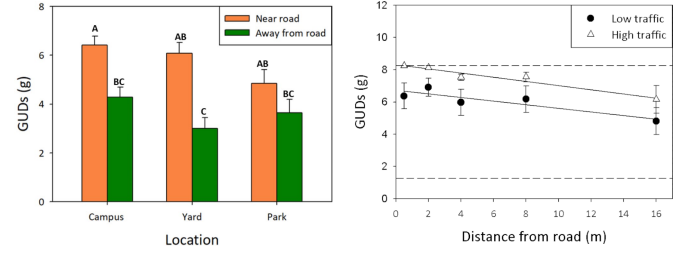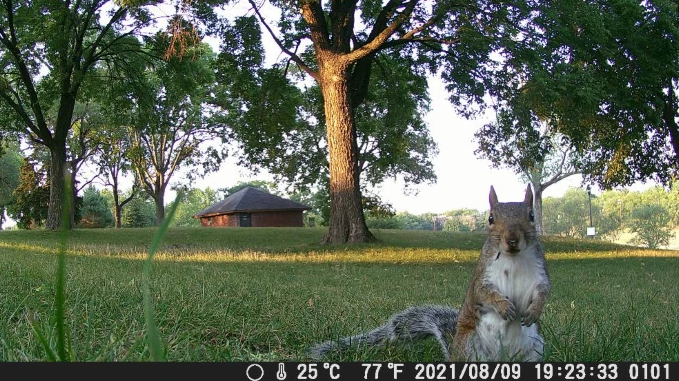Kay, A.D., Hughes, Mnew .T., Ammend, M.G. et al. College squirrels gone wild? Using Sciurus carolinensis behavior to assess the ecosystem value of urban green spaces. Urban Ecosyst 26, 81–88 (2023). https://doi.org/10.1007/s11252-022-01288-7
As urbanization becomes a more widepsread among cities across the globe, there have been many new solutions created as a way to help improve biodiversity in these areas with high amounts of urbanization. One of these is solutions is the implementation of “green infrastrcuture”. This study was done in Minnesota and included three different survery sites: college campuses, resedential yards, and municipal parks. The purpose of this study was to look at the giving up density (GUD) of the eastern gray squirrel in association to the green infrastructure. They also looked at the proximity of the green infrastrcture to roads and if this had any influence of the GUD of the eastern gray squirrels.
The study sites included nine different universities, seven municpal parks and 48 residential homes in the St. Paul and Minneapolis areas of Minnesota. In the second part of the study they assessed the effect of road proximity of on the squirrels GUD for only one of the college campuses (University of St. Paul). In each site they placed aluminum trays with sunflower seeds out for the squirrels. For each site they would place one tray closer in proximity to a roadway and one tray farther away from a roadway. They estimated the “maximum distance from road” using GoogleMaps and ImageJ software. For part 2 of the study they estimated the traffic volume on the University of St. Thomas Campus and explicitly placed the trays along the roadways.

Using the tray data, they found that the GUD did not differ among the three sites, but did differ due to the proximity to roads. The trays away from roads were visited more frequently than the trays near roads at all three locations. Greater distance to roads and the high traffic volumes are both linked to higher GUD. The maximum distance from roads varied at each site and location type, but was shorter for resedential yards in comparison to college campuses and parks. These results indicate that compared the residential yards, both parks and college campuses may be associate with reduced foraging costs for eastern gray squirrels due to greenspaces and distance from roads.
I think this study did a good job of placing feeding trays at several sites within the study site location. They did a good job of spacing the trays amongst each site in reference to roadways. One thing I wish this study did different was look at more than one unviersity setting for part two of their data. They only used one university to assess the direct impact of road proximity on the squirrels. If they had done more than one unviersity there could have been more data to compare these effects. Overall I think this paper sets up a good basis for the understanding on greenspaces in urban areas and college campuses and how roadways can have impacts on eastern gray squirrels foraging behaviors.
